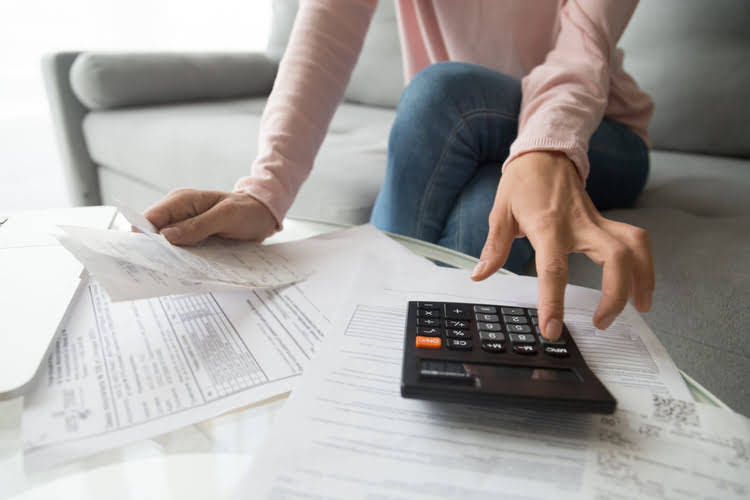
We will assume that an outstanding check has appeared on the outstanding check list that is part of the company’s bank reconciliation for at least four months. In other words, the company issued the check more than four months earlier and the check has not yet cleared the company’s bank account. Best practices for managing and clearing outstanding checks include regular bank statement reconciliation, promptly voiding or canceling unused checks, and maintaining proper record-keeping. Also, always maintain in communication with payees about payments not fully processed. To reconcile outstanding checks with your bank statement, compare the checks issued but not yet cleared with the information provided on the statement, ensuring that both records align.
Please Sign in to set this content as a favorite.
Outstanding checks also provide the opportunity for payment delays, which can be advantageous when it comes to managing cash flow. Even if the checkwriter has sufficient funds, any delay from the depositor simply means higher interest revenue on the capital balance waiting to be drawn down. Tracking of payments can be accomplished through the use of checks, which provide both a paper trail and evidence of payment. Through the use of the check, the sender and the recipient of the payment are able to retain a record of the transaction, which includes the date, the amount, and the payee. In this context, an outstanding check need not be outstanding for long; it may simply be the short period of time between when a check is mailed and when it is received. However, if the payee delays depositing the check, then the payment does not clear the payor’s account.
Things To Know If You Withdraw More Than $10,000 From Your Checking Account
- The amount of outstanding checks is sometimes referred to as float.
- Many checks remain outstanding which can cause risks to both the person holding a check and the entity that issued it.
- This prevents someone from trying to cash or deposit it and possibly having it affect your account balance.
- An outstanding check represents a payment that has been written but not yet cleared by the bank.
- Any checks that have been issued that haven’t cleared the bank must be accounted for under your bank balance column.
- However, if a company voids one of its outstanding checks, the company will need to make an entry in its general ledger.
For instance, the bank charged your business $30 in service fees, but it also paid you $5 in interest. Those payments are recorded in your G/L, but they have yet to hit the bank. You need to subtract both checks from your bank balance, as well as any other checks listed in your check register that haven’t cleared. Some businesses print “Void after 90 days” on their checks to encourage recipients to deposit checks more promptly. Most banks will continue to honor checks for the full 180 days, but that isn’t guaranteed.
- As such, their proper handling is essential in presenting an accurate picture of a company’s financial health.
- However, having to cancel or put a stop payment on a check can be costly.
- They represent a liability for the issuer, as the funds are allocated and effectively removed from the available cash balance, yet they do not decrease the bank account balance until processed.
- Once you locate these items, you’ll need to adjust your G/L balance to reflect them.
- Someone else could be able to change the payee name or the amount if a check is misplaced or stolen before it is taken to the bank.
- Ask the check’s originating bank if you’re unsure of how long you have to cash or deposit a check.
۳ Accounts and notes payable
If the payee finally deposits the check after months of delay, you risk overdrawing your account and bouncing the check. By being proactive and diligent in tracking all spending, you will have a better idea of your overall financial health and can make more suitable plans for the future. You can also commit to growing your financial literacy by learning about more topics around bank accounts and payment.
The Role of Normal Account Balances in Accurate Bookkeeping
Outstanding checks are checks that have been issued but not yet presented for payment or cleared by the bank. They represent pending transactions where the funds have not yet been deducted from the issuer’s account. These checks can pose risks such as overdrawing the account, potential fraud, accounting discrepancies, https://www.bookstime.com/ and delayed financial reporting. Bouncing an outstanding check can lead to financial consequences, such as fees imposed by the bank, damage to your credit rating, and potential legal actions from the payee. Be mindful of what outstanding checks you’ve written before drawing down your bank balance.

Where To Cash Your Money Order Quickly and Safely
- Automated reconciliation software solutions such as Nanonets offer a streamlined solution to the challenges posed by outstanding checks in the reconciliation process.
- Last, outstanding checks might have an impact on management of the cash flow.
- Since they are still outstanding, the payor (the entity that issued the check) should keep enough cash in their account so they can pay all outstanding checks.
- In the bank reconciliation, outstanding checks are deducted from the balance per bank.
- In this guide, we’ll explain exactly why doing a bank reconciliation is so important, and give you step-by-step instructions on how to complete one.
- These items are typically service fees, overdraft fees, and interest income.
- Once the balances are equal, businesses need to prepare journal entries for the adjustments to the balance per books.
In this situation, the payee will need to ask the payer for a replacement payment from a valid checking account, and may demand compensation for the NSF fee. The Platinum CashPlus account offers the same benefits as Premier, plus two additional enrollments in identity and credit protection, and a $695 annual engagement bonus. To avoid a fee, you need $5,000 total in monthly deposits and $25,000 in your average daily cash balance.

Personal Loans
PNC has many useful articles to help you make the most of your money. To completely avoid the issue, you could choose not to write checks. Instead, electronic cash payment methods, such as Zelle®, take the money out of your account faster.
- Outstanding checks may sit unspent for a long time, but it’s possible to avoid overdraft fees and insufficient funds charges that stem from essentially spending the same money twice.
- • Track the value of outstanding checks in your account register.
- As a result, your bank account balance may fall below $0 and incur overdraft fees.
- You can also call or write to remind the payee that the check is outstanding.
- While offering a cash float benefit, outstanding carry the risks of fraud and reporting discrepancies.
- As mentioned above, you may need to return the original check or sign documents confirming the check is lost or destroyed.
What happens to an uncashed personal check?
Bank reconciliation done through accounting software is easier and error-free. The bank transactions are imported automatically allowing you to match and categorize a large number of transactions at the click of a button. This makes the bank reconciliation process efficient outstanding checks and controllable. Forgotten outstanding checks are a common source of bank overdrafts. One way to avoid this occurrence is to maintain a balanced checkbook. This can help prevent any unnecessary NSFs if the payee decides to cash the check at a later date.
